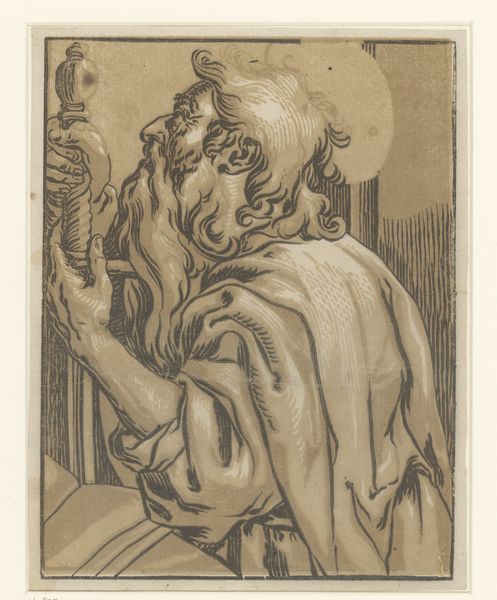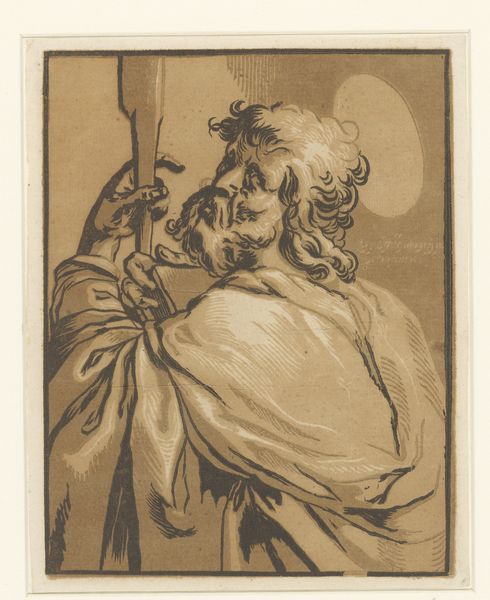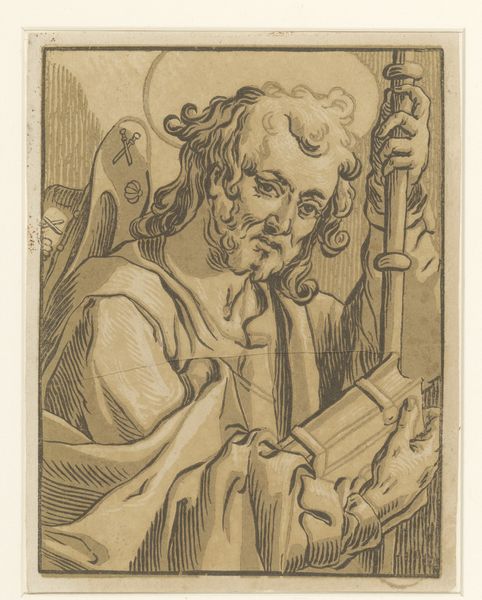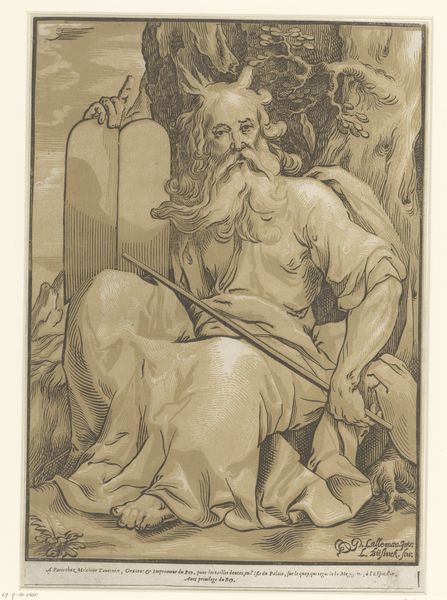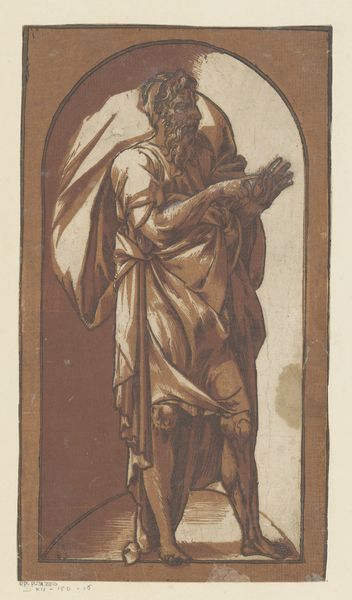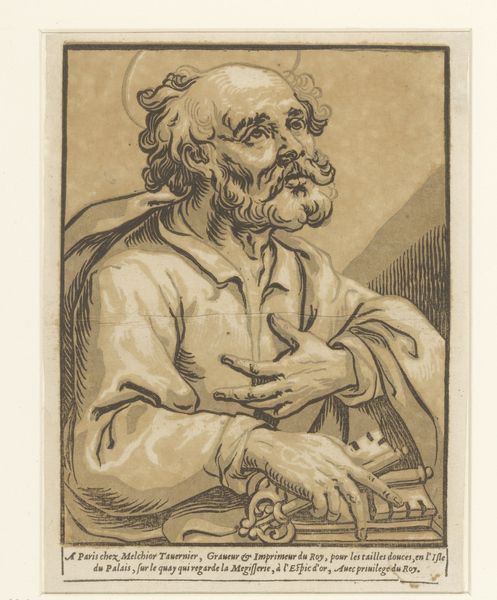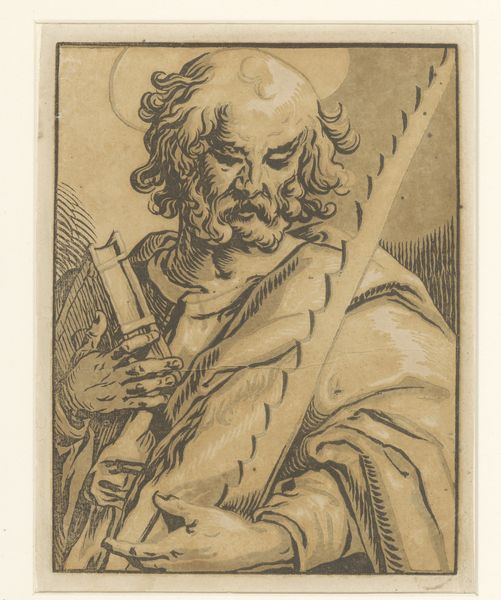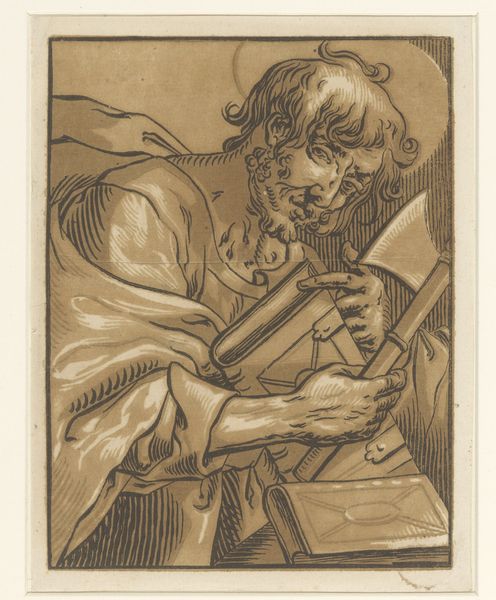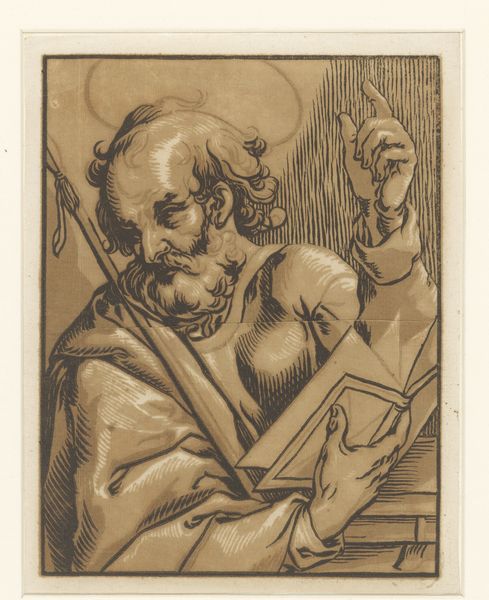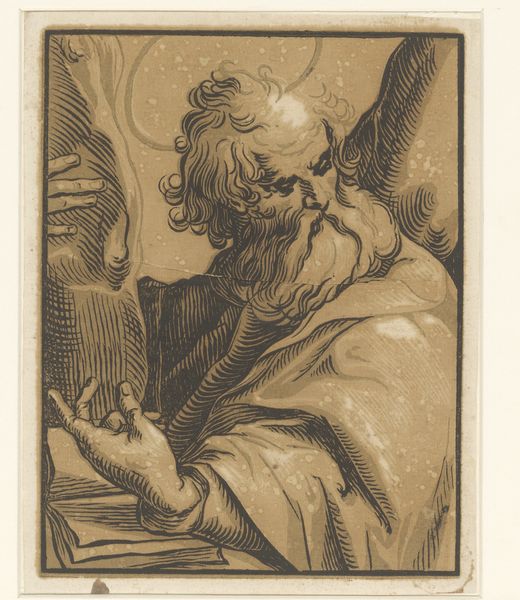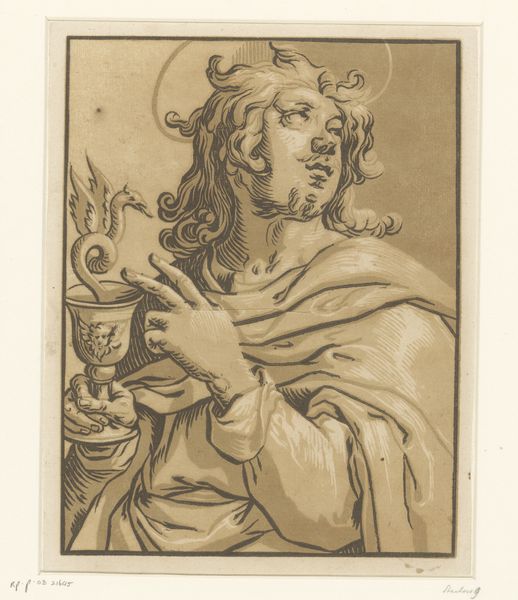
drawing, paper, ink
#
portrait
#
drawing
#
baroque
#
paper
#
ink
#
pencil drawing
#
portrait drawing
#
portrait art
Dimensions: height 208 mm, width 160 mm
Copyright: Rijks Museum: Open Domain
Ludwig Büsinck created this chiaroscuro woodcut of the Apostle Jude Thaddeus in the early 17th century. It’s an intriguing example of how religious imagery functioned within the social and institutional context of the period. Made in Germany, this print reflects the religious tensions between Catholics and Protestants. Jude, often invoked as the patron saint of lost causes, was a popular figure during the Counter-Reformation, a period of Catholic resurgence against the rise of Protestantism. Büsinck, though German, spent much of his career in Paris. The print itself demonstrates the international character of the art world at this time, and of the print market in particular. The image creates meaning through its symbolic language: Jude’s halo, staff, and book, all visual cues meant to identify him and communicate his saintly attributes to a largely illiterate audience. To fully understand the print's significance, we can explore the artist’s biography, religious history, and the print market of the time. This is a task for the historian, whose work reveals how the meaning of art is contingent on its social and institutional context.
Comments
No comments
Be the first to comment and join the conversation on the ultimate creative platform.
